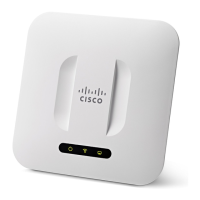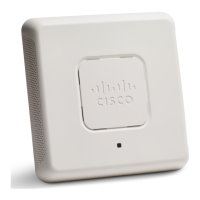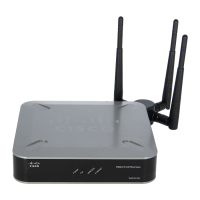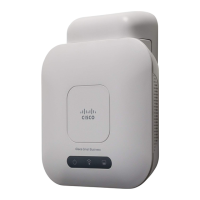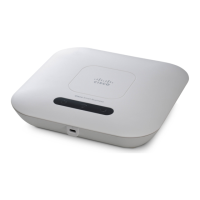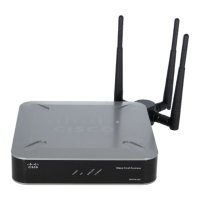Client Quality of Service
Client QoS Association
Cisco Small Business WAP121 and WAP321 Wireless-N Access Point with PoE 130
7
• Mark Class of Service—Marks all packets for the associated traffic stream
with the specified class of service value in the priority field of the 802.1p
header. If the packet does not already contain this header, one is inserted.
The CoS value is an integer from 0 to 7.
• Mark IP DSCP—Marks all packets for the associated traffic stream with the
IP DSCP value you select from the list or specify.
- Select from List—A list of DSCP types.
- Match to Value—A DSCP value that you specify. The value is an integer
between 0 to 63.
• Mark IP Precedence—Marks all packets for the associated traffic stream
with the specified IP precedence value. The IP precedence value is an
integer from 0 to 7.
• Disassociate Class Map—Removes the class selected in the Class Map
Name list from the policy selected in the Policy Map Name list.
• Member Classes—Lists all DiffServ classes currently defined as members
of the selected policy. If no class is associated with the policy, the field is
empty.
STEP 7 Click Save. The changes are saved to the Startup Configuration.
NOTE To delete a policy map, select it in the Policy Map Name list and click Delete.
Client QoS Association
The Client QoS Association page provides additional control over certain QoS
aspects of wireless clients that connect to the network, such as the amount of
bandwidth an individual client is allowed to send and receive. To control general
categories of traffic, such as HTTP traffic or traffic from a specific subnet, you can
configure ACLs and assign them to one or more VAPs.
In addition to controlling general traffic categories, Client QoS allows you to
configure per-client conditioning of various micro-flows through Differentiated
Services (DiffServ). DiffServ policies are a useful tool for establishing general
micro-flow definition and treatment characteristics that can be applied to each
wireless client, both inbound and outbound, when it is authenticated on the
network.
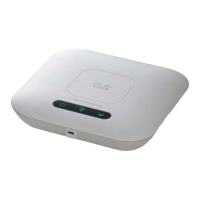
